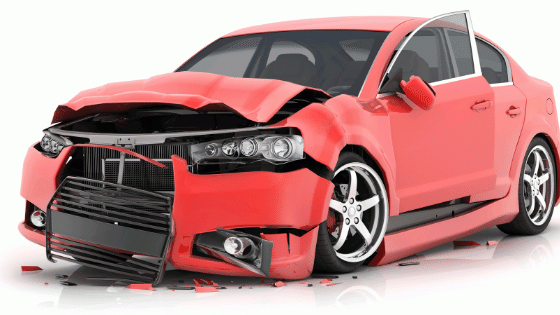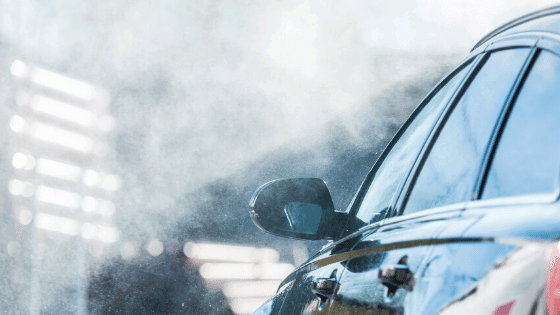- Our Mission: To provide the highest level of service and quality collision repair in an honest, ethical, and efficient manner. | Contact Us:
- 626-457-9114
- [email protected]

How to Find the Right Body Shop for your Car
August 4, 2019
How to Read your Body Shop Estimate
September 16, 2019- 1 Your Car’s Actual Cash Value (ACV)
- 2 How Insurance Companies Determine if Your Car is a Total Loss
- 2.1 1.The Make, Model, and Year of your Car
- 2.2 2. Cost to Repair
- 2.3 3. Salvage Value
- 3 Can My Car Still be Considered a Total Loss if the Cost to Repair is Less than Its Value?
- 3.1 About Total Loss Threshold
If you were just told that your car is a “total loss,” the news can be confusing and disappointing, especially if you just bought it new.
There are many factors that insurance companies will consider when determining the difference between the cost to repair your car and its current value.
So if you don’t agree with your insurance company or don’t know how they arrived at their decision, we will provide you with information to help you understand what a “total loss” means.” With this information in hand, you can better prepare your next step — whether that’s repairing your car’s damages or shopping for a new one.
Your Car’s Actual Cash Value (ACV)
Insurance companies will consider your vehicle’s Actual Cash Value. The ACV represents the amount you can expect to receive for its current market price.
You can obtain a rough estimate of your car’s ACV by going to Kelley Blue Book and entering your vehicle’s information like make, model, mileage, and options. Kelley Blue Book will usually give you several values for your car. They include:
Retail
Private Party
Trade-In
Certified Pre-Owned
Your ACV won’t be an exact match to any of these numbers — however, it will most likely resemble the private party value. This amount refers to selling your car directly to another person. Let’s take a look at how your insurance company will use your car’s actual cash value to determine whether it’s worth repairing.
How Insurance Companies Determine if Your Car is a Total Loss
Exact procedures will vary by insurance companies, but generally speaking, they all consider certain information about your car to determine its final value.
1.The Make, Model, and Year of your Car
Your insurance company will start with the basics, which include the year, make, model, and specific details for your vehicle. It’s similar to the information you input into Kelly Blue Book but a lot more thorough. Included in this report is your car’s current demand in your local area.
2. Cost to Repair
Next, would be your car’s estimate for repairs. This report looks at all of your car’s damages and the cost to repair or replace its damaged parts.
3. Salvage Value
The salvage value looks at the value of your car’s parts like it’s bumper, frame, tires, and any other salvageable components. How insurance companies arrive at this figure will vary, but they determine the total value of all of these parts to calculate your car’s salvage value.
After your insurance company calculates these three figures, they will subtract the salvage value from your car’s ACV. If the cost to repair is higher than this amount, then your vehicle is declared a total loss.
Actual Cash Value – Salvage Value = The amount your insurance company will pay for your car.
Cost of Repairs = If this amount exceeds the first value, your car is considered a total loss.
Can My Car Still be Considered a Total Loss if the Cost to Repair is Less than Its Value?
Let’s say your car’s ACV is $10,000 and the cost to repair is $9,000. Clearly, $9,000 is a lot of damage and only $1,000 shy of its ACV. Why would anyone want their car back after this much damage?
About Total Loss Threshold
While the normal standard for declaring a vehicle a total loss is when the cost to repair is above the ACV, it’s not always the case. Insurance companies will apply what’s called the total loss threshold.
Total loss threshold percentages vary by state, but they usually don’t exceed 80%. Other states, including California, apply what is called a Total Loss Formula (TLF). TLF is a specific insurance industry formula that does not have a set limit.
To look at what Total Loss Threshold looks like, let’s give an example:
Let’s Assume the Total Loss Threshold is 75%
Your Car’s ACV = $13,500
Salvage Value = $3,000
ACV – Salvage = $10,500 (Your insurer’s settlement)
Cost to Repair = $11,000
$11,000 = 81% of its ACV threshold and it’s over your insurer’s settlement amount after salvage. Your car is a total loss.
Keep in mind that the exact formulas and procedures will vary by state and by the insurance company. Speak with your claims adjuster from your insurance company and ask them about their own total loss procedures. As part of their auto body repair services, most body shops coordinate inspections directly with insurance companies. Shops can be a good source for any questions you have related to total losses. However, this information gives you a general idea of what auto insurance companies look for before deciding if you have a totaled vehicle on your hands.
Have Questions or Wish to Schedule an Appointment?
Call Us:(626) 457-9114
or Send Us a Message


